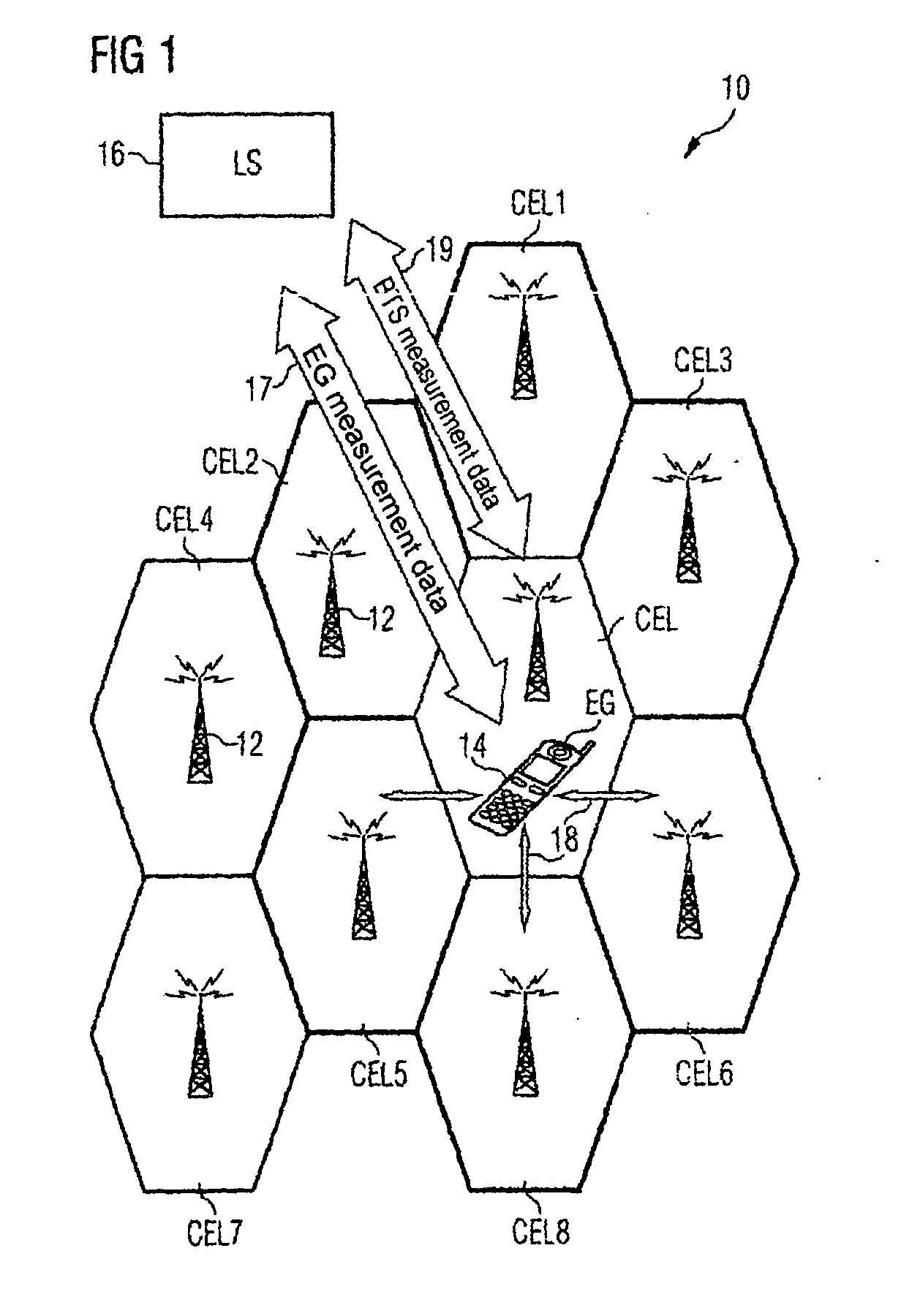Method and device for determining the position of terminal in a cellular mobile radio network
a technology of cellular mobile radio and terminal, which is applied in the direction of selection arrangements, electrical equipment, wireless communication, etc., can solve the problems of inexact service area identification methods and disadvantages, and achieve the effect of minimizing the number of additional devices or equipment required and high accuracy
- Summary
- Abstract
- Description
- Claims
- Application Information
AI Technical Summary
Benefits of technology
Problems solved by technology
Method used
Image
Examples
Embodiment Construction
[0046] The mobile radio network 10 shown schematically in FIG. 1 can be a GSM, GPRS, UMTS or also TETRA (TErrestial TRunked Radio) network or similar cellular mobile radio network. This network 10 features a plurality of cells CEL and CEL1-CEL8. Each of these cells is serviced by one of the symbolically indicated base stations 12. The schematic diagram of FIG. 1 shows all cells as having the same size and form, but in actual fact the mobile radio cells can have quite different dimensions. The base stations 12 (i.e. the BTSs of the base stations) do not have to be located in the center of a cell but, depending on the beam form of the transmit antenna of the base station can be located at one edge or corner of the cell to be serviced for example.
[0047] In a cell CEL of the mobile radio network 10 there is a terminal 14. After the terminal 14 is switched on a suitable radio cell must first be found for the service provision before the user can begin and accept calls. For this purpose ...
PUM
 Login to View More
Login to View More Abstract
Description
Claims
Application Information
 Login to View More
Login to View More - R&D
- Intellectual Property
- Life Sciences
- Materials
- Tech Scout
- Unparalleled Data Quality
- Higher Quality Content
- 60% Fewer Hallucinations
Browse by: Latest US Patents, China's latest patents, Technical Efficacy Thesaurus, Application Domain, Technology Topic, Popular Technical Reports.
© 2025 PatSnap. All rights reserved.Legal|Privacy policy|Modern Slavery Act Transparency Statement|Sitemap|About US| Contact US: help@patsnap.com



